Stimuli-Responsive Star Polymer as an Admixture for Crystallization of Hollow Crystals
Abstract
:1. Introduction
2. Materials and Methods
2.1. Materials
2.2. Synthesis of Polymer
2.3. Measurement Procedures
3. Results and Discussion
3.1. Crystallization Course
3.2. Analysis Using Scanning Electron Microscopy
3.3. Critical Aggregation Concentration and Particle Size Distribution of Polymers
3.4. Purity of Crystalline Product
4. Conclusions
Supplementary Materials
Author Contributions
Funding
Institutional Review Board Statement
Informed Consent Statement
Data Availability Statement
Acknowledgments
Conflicts of Interest
References
- Nývlt, J.; Ulrich, J. Admixtures in Crystallization; Wiley: Hoboken, NJ, USA, 1995; ISBN 9783527287390. [Google Scholar]
- Sangwal, K. Additives and Crystallization Processes; John Wiley & Sons, Ltd.: Chichester, UK, 2007; ISBN 9780470517833. [Google Scholar]
- Mullin, J.W. Crystallization, 4th ed.; Butterworth-Heinemann: Oxford, UK, 2001; ISBN 0-7506-4833-3. [Google Scholar]
- Huang, J.; Yin, Q.; Ulrich, J. The Effect of Dissolved Gases as Impurities on Crystallization. Chem. Eng. Technol. 2016, 39, 1213–1218. [Google Scholar] [CrossRef]
- Huang, J.; Yin, Q.; Ulrich, J. Influence of dissolved CO2 on crystallization of epsomite—Variation of temperature. J. Cryst. Growth 2017, 469, 18–23. [Google Scholar] [CrossRef]
- Lemanowicz, M.; Mielańczyk, A.; Walica, T.; Kotek, M.; Gierczycki, A. Application of Polymers as a Tool in Crystallization—A Review. Polymers 2021, 13, 2695. [Google Scholar] [CrossRef] [PubMed]
- Kosanovic, C.; Fermani, S.; Falini, G.; Kralj, D. Crystallization of Calcium Carbonate in Alginate and Xanthan Hydrogels. Crystals 2017, 7, 355. [Google Scholar] [CrossRef] [Green Version]
- Sharma, M.; Trout, B.L. Effect of Pore Size and Interactions on Paracetamol Aggregation in Porous Polyethylene Glycol Diacrylate Polymers. J. Phys. Chem. B 2015, 119, 8135–8145. [Google Scholar] [CrossRef]
- Schweikle, M.; Bjørnøy, S.H.; van Helvoort, A.T.J.; Haugen, H.J.; Sikorski, P.; Tiainen, H. Stabilisation of amorphous calcium phosphate in polyethylene glycol hydrogels. Acta Biomater. 2019, 90, 132–145. [Google Scholar] [CrossRef]
- Hutfles, J.; Ravichandran, S.A.; Pellegrino, J. Screening polymer surfaces in crystallization. Colloids Surfaces A Physicochem. Eng. Asp. 2019, 582, 123869. [Google Scholar] [CrossRef]
- Song, Y.; Cai, Z.; Li, Z.; Guan, G.; Jiang, Y. Preferential Orientation Effect of Polymers on Paracetamol Crystallization: Experiments and Modeling. Cryst. Growth Des. 2018, 18, 4987–4997. [Google Scholar] [CrossRef]
- Frank, D.S.; Matzger, A.J. Influence of Chemical Functionality on the Rate of Polymer-InducedHeteronucleation. Cryst. Growth Des. 2017, 17, 4056–4059. [Google Scholar] [CrossRef] [PubMed]
- Arioglu-Tuncil, S.; Bhardwaj, V.; Taylor, L.S.; Mauer, L.J. Amorphization of thiamine chloride hydrochloride: A study of the crystallization inhibitor properties of different polymers in thiamine chloride hydrochloride amorphous solid dispersions. Food Res. Int. 2017, 99, 363–374. [Google Scholar] [CrossRef]
- Guan, J.; Liu, Q.; Liu, J.; Cui, Z.; Zhang, X.; Mao, S. Elucidation of alginate-drug miscibility on its crystal growth inhibition effect in supersaturated drug delivery system. Carbohydr. Polym. 2020, 230, 115601. [Google Scholar] [CrossRef]
- Sodhi, I.; Mallepogu, P.; Thorat, V.P.; Kashyap, M.C.; Sangamwar, A.T. Insights on role of polymers in precipitation of celecoxib from supersaturated solutions as assessed by focused beam reflectance measurement (FBRM). Eur. J. Pharm. Sci. 2019, 137, 1–14. [Google Scholar] [CrossRef] [PubMed]
- Diao, Y.; Harada, T.; Myerson, A.; Hatton, T.; Trout, B. The role of nanopore shape in surface-induced crystallization. Nat. Mater. 2011, 10, 867–871. [Google Scholar] [CrossRef]
- Choi, H.; Lee, H.; Lee, M.K.; Lee, J. Polymer-Directed Crystallization of Atorvastatin. J. Pharm. Sci. 2012, 101, 2941–2951. [Google Scholar] [CrossRef] [PubMed]
- Lee, S.Y.; Yu, G.; Kim, I.W. Effects of polymeric additives on the crystallization and release behavior of amorphous ibuprofen. J. Nanomater. 2013, 2013, 503069. [Google Scholar] [CrossRef] [Green Version]
- Du, Q.; Wang, Y.; Li, A.; Yang, H. Scale-inhibition and flocculation dual-functionality of poly(acrylic acid) grafted starch. J. Environ. Manag. 2018, 210, 273–279. [Google Scholar] [CrossRef] [PubMed]
- Munk, T.; Baldursdottir, S.; Hietala, S.; Rades, T.; Kapp, S.; Nuopponen, M.; Kalliomäki, K.; Tenhu, H.; Rantanen, J. Crystal Morphology Modification by the Addition of Tailor-Made Stereocontrolled Poly(N-isopropyl acrylamide). Mol. Pharm. 2012, 9, 1932–1941. [Google Scholar] [CrossRef] [PubMed]
- Lemanowicz, M.; Wong Munoz, E.; Mielańczyk, A.; Kiraga, K.; Gierczycki, A. Upper Critical Solution Temperature Polymer Phase Transition as a Tool for the Control of Inorganic Salt Crystallization Process. Materials 2021, 14, 5373. [Google Scholar] [CrossRef] [PubMed]
- Gao, H.; Matyjaszewski, K. Synthesis of functional polymers with controlled architecture by CRP of monomers in the presence of cross-linkers: From stars to gels. Prog. Polym. Sci. 2009, 34, 317–350. [Google Scholar] [CrossRef]
- Van Ravensteijn, B.G.P.; Bou Zerdan, R.; Seo, D.; Cadirov, N.; Watanabe, T.; Gerbec, J.A.; Hawker, C.J.; Israelachvili, J.N.; Helgeson, M.E. Triple Function Lubricant Additives Based on Organic-Inorganic Hybrid Star Polymers: Friction Reduction, Wear Protection, and Viscosity Modification. ACS Appl. Mater. Interfaces 2019, 11, 1363–1375. [Google Scholar] [CrossRef]
- Żołek-Tryznowska, Z.; Tryznowski, M.; Królikowska, J. Hyperbranched polyglycerol as an additive for water-based printing ink. J. Bus. Psychol. 2015, 30, 385–392. [Google Scholar] [CrossRef] [Green Version]
- Mougin, N. Star-Shaped Polymers and Their Use in Cosmetics 2000. Pat. No. EP1043345, 3 September 2003. [Google Scholar]
- Yang, D.P.; Oo, M.N.N.L.; Deen, G.R.; Li, Z.; Loh, X.J. Nano-Star-Shaped Polymers for Drug Delivery Applications. Macromol. Rapid Commun. 2017, 38, 1700410. [Google Scholar] [CrossRef] [PubMed]
- Sharma, S.D.; Malhotra, L.K. Growth of hollow crystals of cadmium sulphide. J. Cryst. Growth 1971, 8, 285–287. [Google Scholar] [CrossRef]
- Bhargavi, N.; Chavan, R.B.; Shastri, N.R. Generation of Hollow Crystals of a Drug with Lamellar Structure Forming Ability. Cryst. Growth Des. 2017, 17, 1480–1483. [Google Scholar] [CrossRef]
- Bhargavi, N.; Chavan, R.B.; Shastri, N.R. Hollow crystal generation through polymorphic transformation—A case study of flufenamic acid. CrystEngComm 2018, 20, 275–279. [Google Scholar] [CrossRef]
- Tong, F.; Li, W.; Li, Z.; Islam, I.; Al-Kaysi, R.O.; Bardeen, C.J. Molecular Crystal Microcapsules: Formation of Sealed Hollow Chambers via Surfactant-Mediated Growth. Angew. Chemie Int. Ed. 2020, 59, 23035–23039. [Google Scholar] [CrossRef] [PubMed]
- Wang, B.; Jin, P.; Yue, Y.; Ji, S.; Li, Y.; Luo, H. Synthesis of NaCl single crystals with defined morphologies as templates for fabricating hollow nano/micro-structures. RSC Adv. 2015, 5, 5072–5076. [Google Scholar] [CrossRef]
- Mo, M.; Yu, J.C.; Zhang, L.; Li, S.-K.A. Self-Assembly of ZnO Nanorods and Nanosheets into Hollow Microhemispheres and Microspheres. Adv. Mater. 2005, 17, 756–760. [Google Scholar] [CrossRef]
- Yang, X.; Fu, J.; Jin, C.; Chen, J.; Liang, C.; Wu, M.; Zhou, W. Formation Mechanism of CaTiO 3 Hollow Crystals with Different Microstructures. J. Am. Chem. Soc. 2010, 132, 14279–14287. [Google Scholar] [CrossRef]
- Yue, S.; Zhang, L.; Lu, J.; Zhang, J. Polymer-controlled crystallization of dumbbell-like ZnO hollow architectures. Mater. Lett. 2009, 63, 1217–1220. [Google Scholar] [CrossRef]
- Neugebauer, D.; Odrobińska, J.; Bielas, R.; Mielańczyk, A. Design of systems based on 4-armed star-shaped polyacids for indomethacin delivery. New J. Chem. 2016, 40, 10002–10011. [Google Scholar] [CrossRef]
- Mielańczyk, A.; Neugebauer, D. Synthesis and characterization of D-(−)-salicine-based star copolymers containing pendant carboxyl groups with fluorophore dyes. J. Polym. Sci. Part A Polym. Chem. 2014, 52, 2399–2411. [Google Scholar] [CrossRef]
- Sinek, A.; Kupczak, M.; Mielańczyk, A.; Lemanowicz, M.; Yusa, S.; Neugebauer, D.; Gierczycki, A. Temperature and pH-Dependent Response of Poly(Acrylic Acid) and Poly(Acrylic Acid-co-Methyl Acrylate) in Highly Concentrated Potassium Chloride Aqueous Solutions. Polymers 2020, 12, 486. [Google Scholar] [CrossRef] [PubMed] [Green Version]
- Zhang, S.; Qu, H.; Yang, Z.; Fu, C.; Tian, Z.; Yang, W. Scale inhibition performance and mechanism of sulfamic/amino acids modified polyaspartic acid against calcium sulfate. Desalination 2017, 419, 152–159. [Google Scholar] [CrossRef]
- Popov, K.; Oshchepkov, M.; Kamagurov, S.; Tkachenko, S.; Dikareva, J.; Rudakova, G. Synthesis and properties of novel fluorescent-tagged polyacrylate-based scale inhibitors. J. Appl. Polym. Sci. 2017, 134, 45017. [Google Scholar] [CrossRef]
- Zhang, J.; Zhang, S.; Wang, Z.; Zhang, Z.; Wang, S.; Wang, S. Hopper-like single crystals of sodium chloride grown at the interface of metastable water droplets. Angew. Chemie Int. Ed. 2011, 50, 6044–6047. [Google Scholar] [CrossRef]
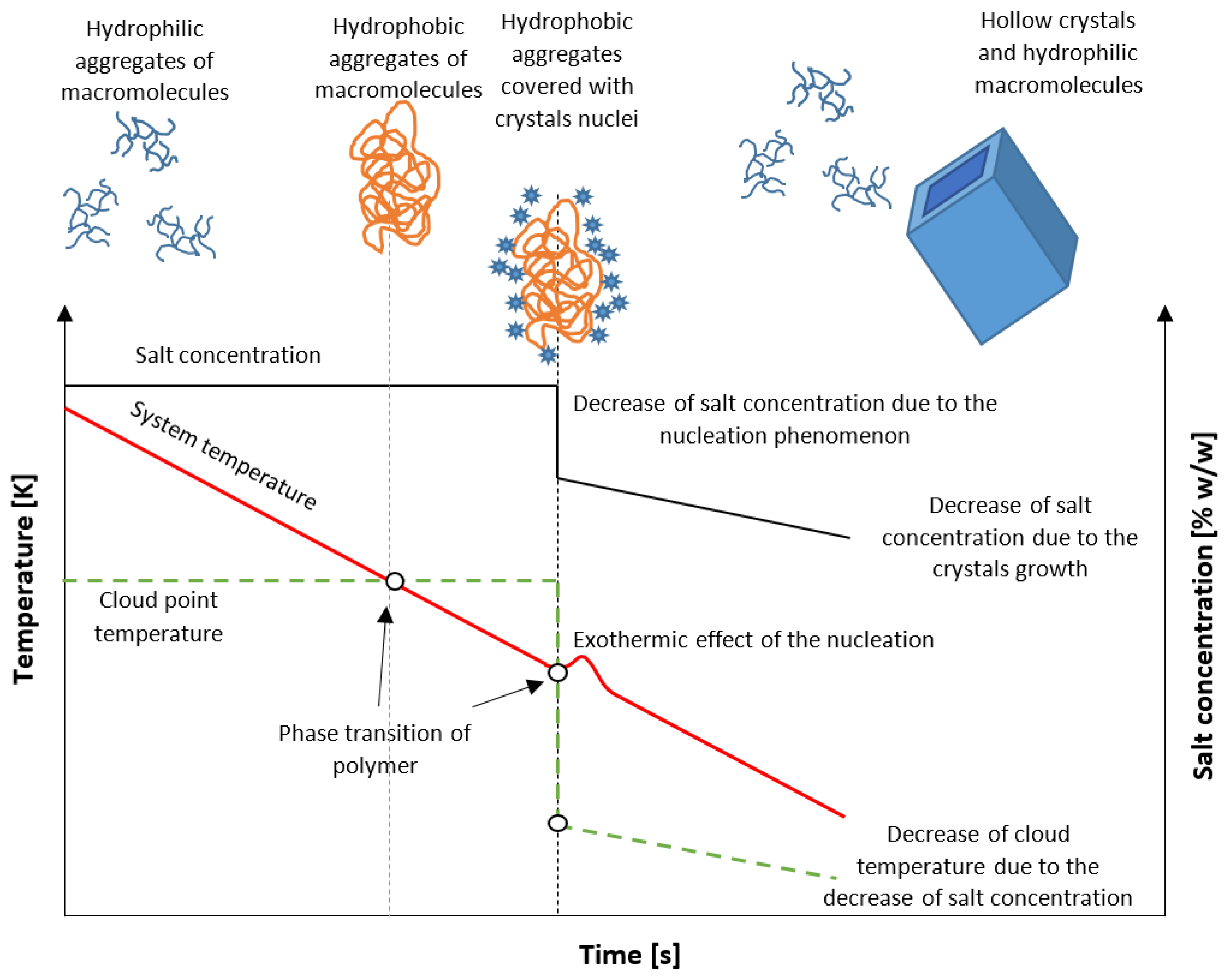
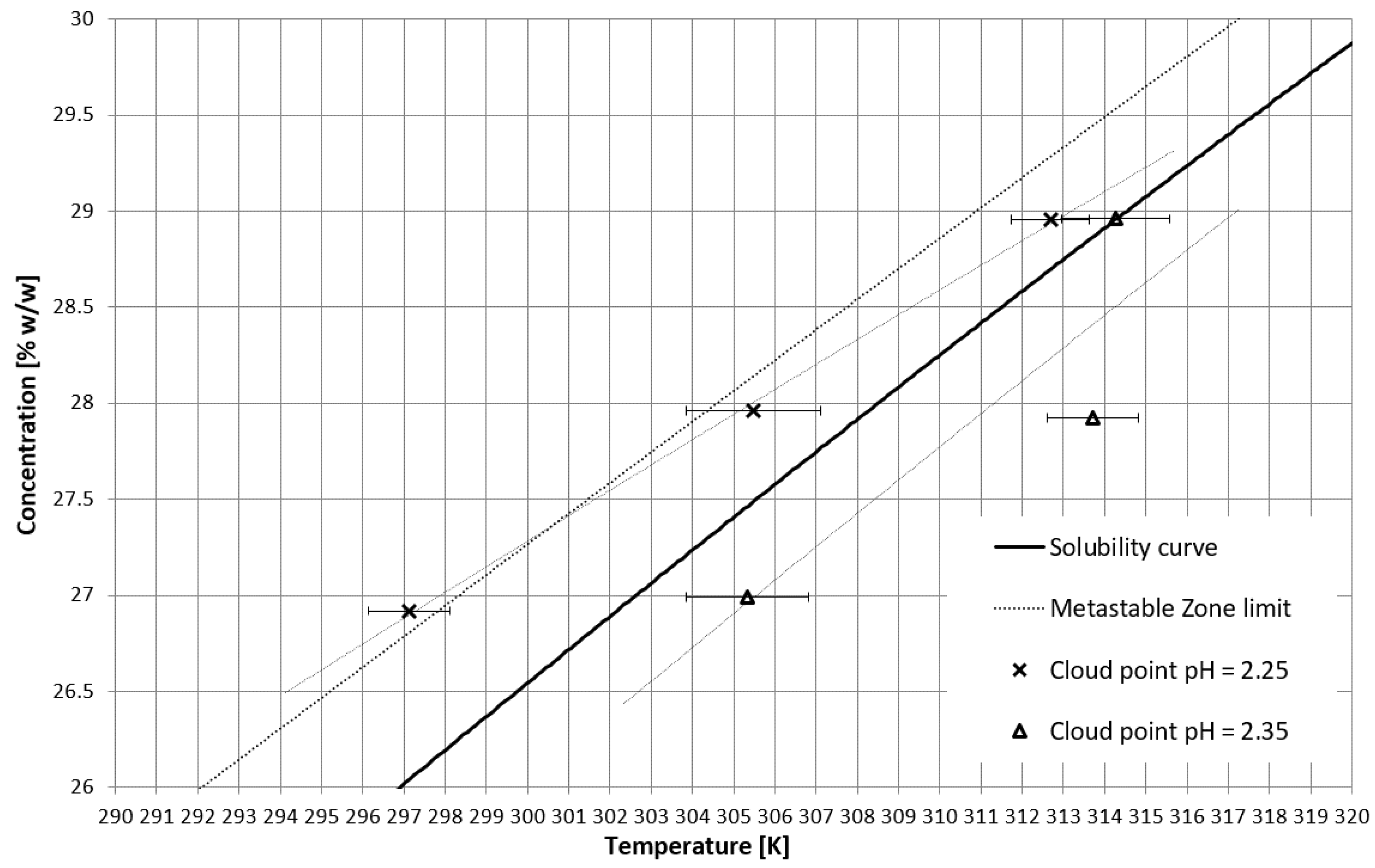

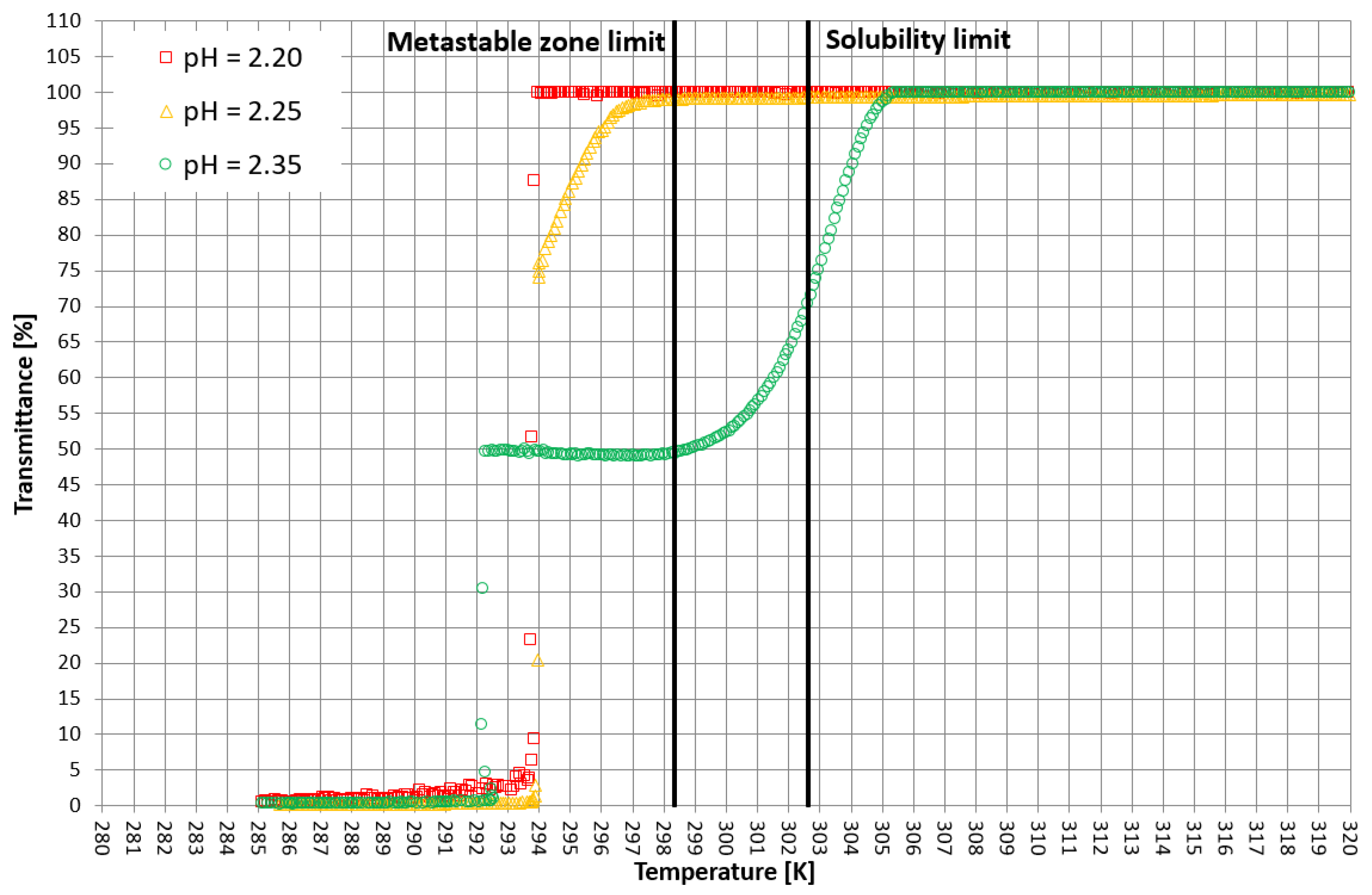

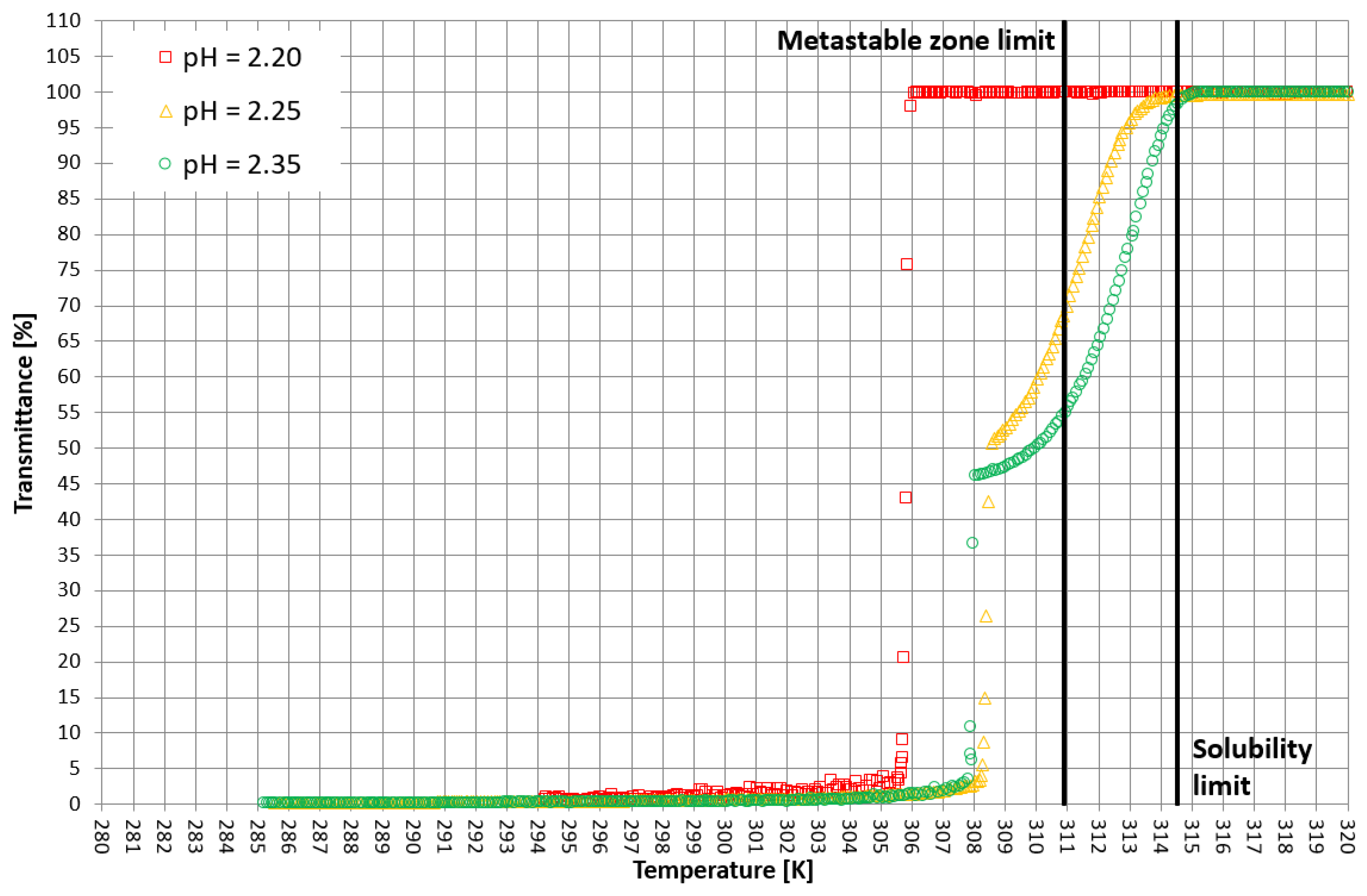
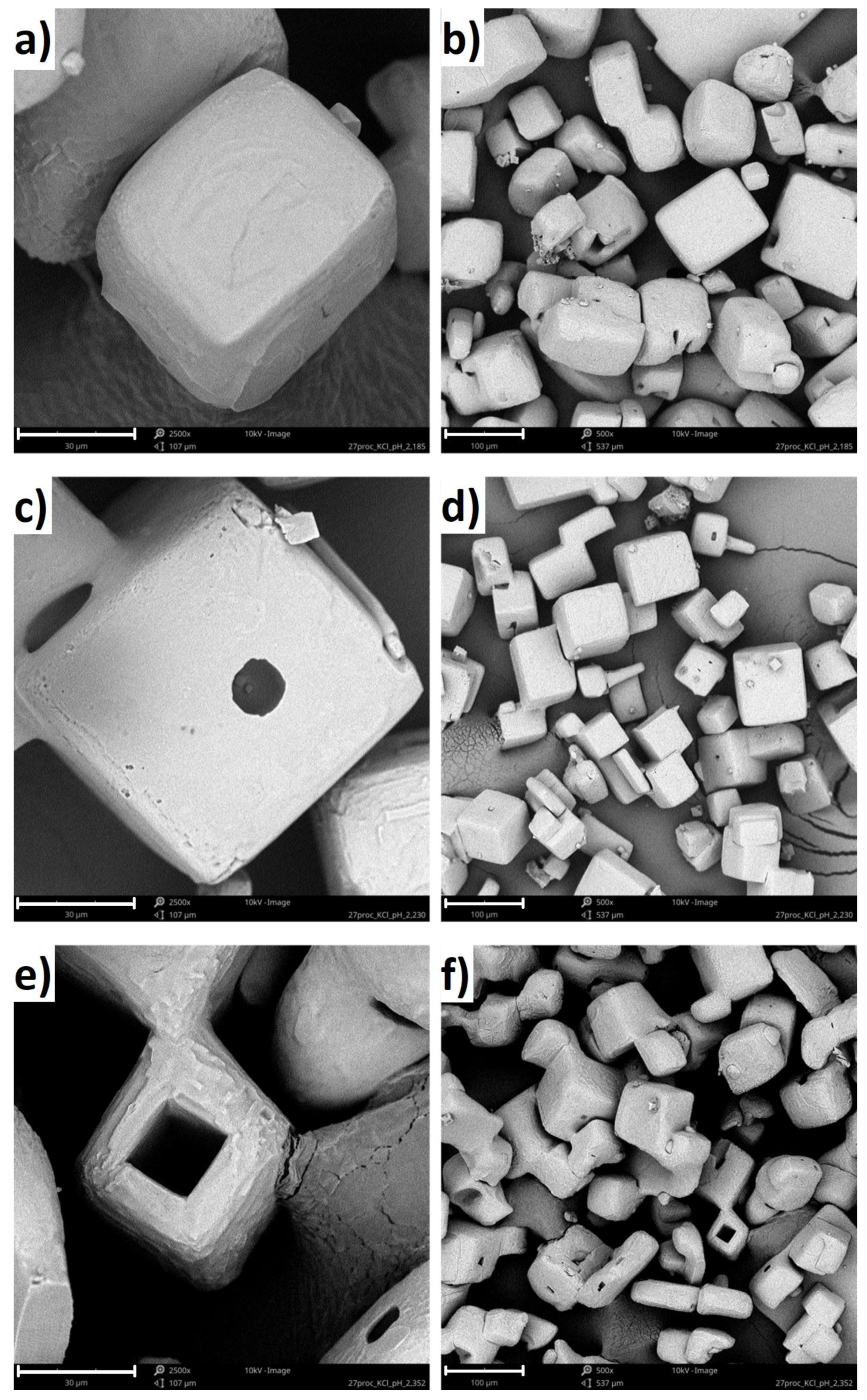
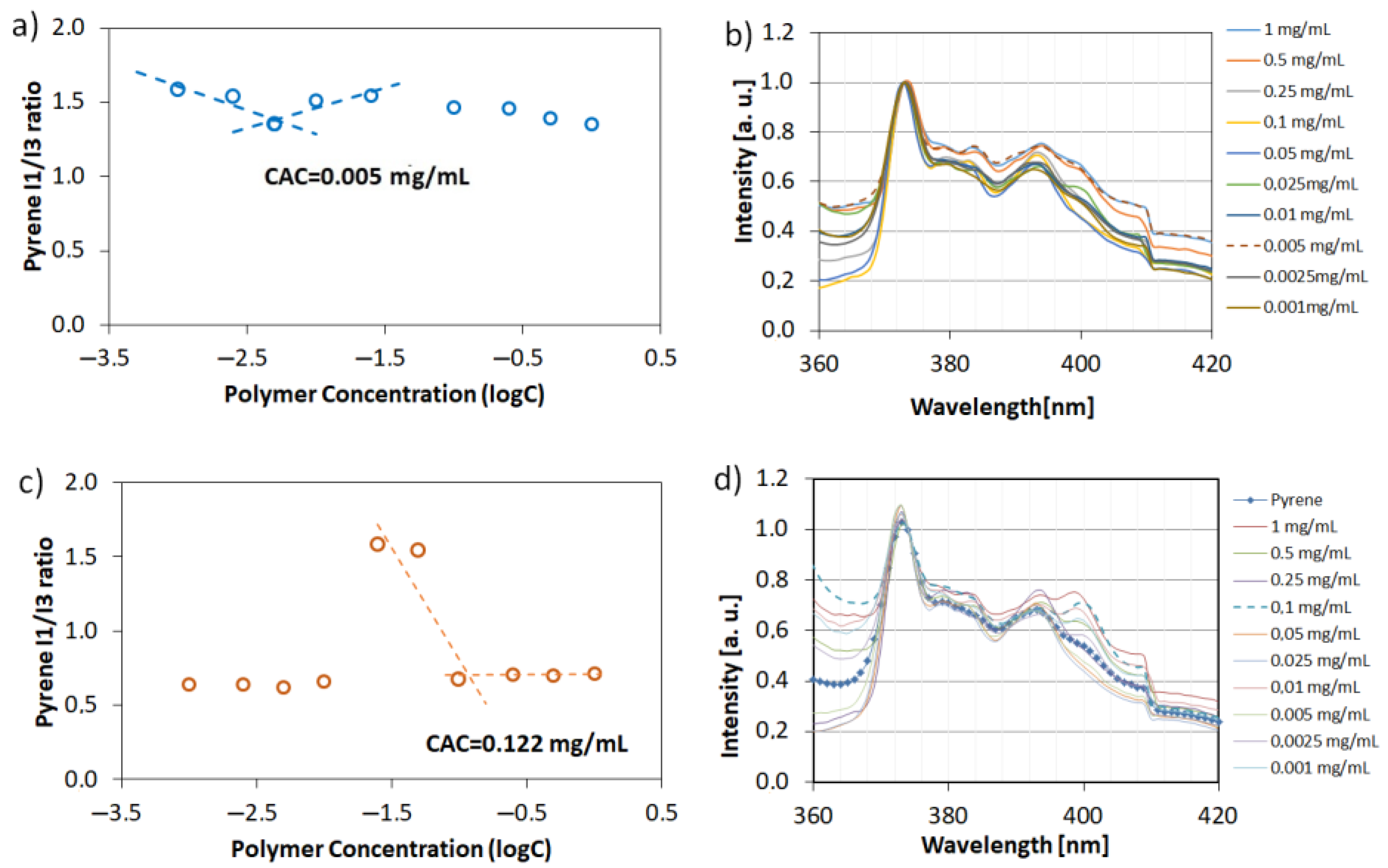



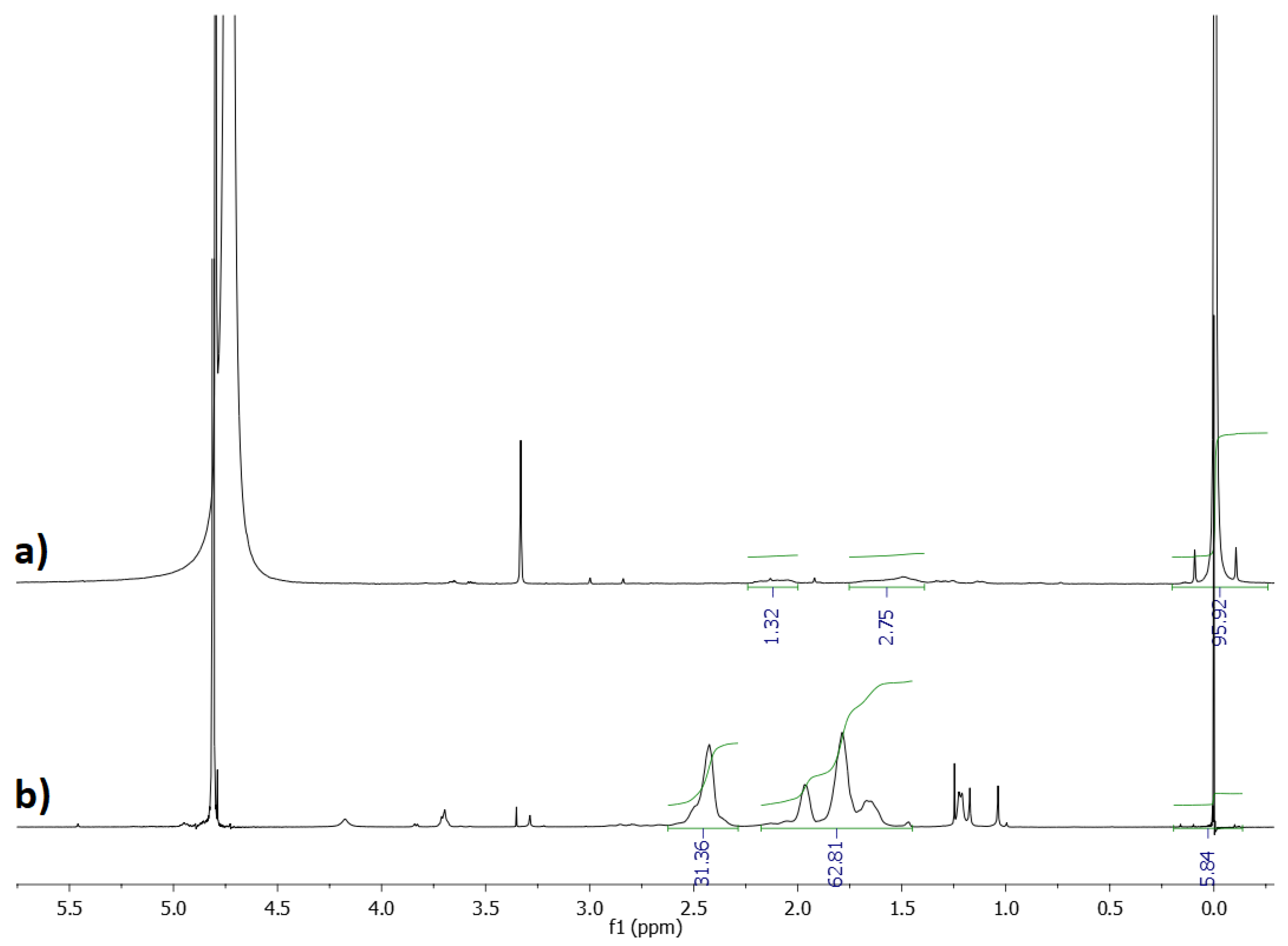
Publisher’s Note: MDPI stays neutral with regard to jurisdictional claims in published maps and institutional affiliations. |
© 2022 by the authors. Licensee MDPI, Basel, Switzerland. This article is an open access article distributed under the terms and conditions of the Creative Commons Attribution (CC BY) license (https://creativecommons.org/licenses/by/4.0/).
Share and Cite
Lemanowicz, M.; Chrzanowska, J.; Kotek, M.; Mielańczyk, A.; Kupczak, M.; Niewolik, D.; Korytkowska-Wałach, A.; Klymenko, O.; Kocur, A.; Neugebauer, D. Stimuli-Responsive Star Polymer as an Admixture for Crystallization of Hollow Crystals. Materials 2022, 15, 8240. https://doi.org/10.3390/ma15228240
Lemanowicz M, Chrzanowska J, Kotek M, Mielańczyk A, Kupczak M, Niewolik D, Korytkowska-Wałach A, Klymenko O, Kocur A, Neugebauer D. Stimuli-Responsive Star Polymer as an Admixture for Crystallization of Hollow Crystals. Materials. 2022; 15(22):8240. https://doi.org/10.3390/ma15228240
Chicago/Turabian StyleLemanowicz, Marcin, Justyna Chrzanowska, Milena Kotek, Anna Mielańczyk, Maria Kupczak, Daria Niewolik, Anna Korytkowska-Wałach, Olesya Klymenko, Alicja Kocur, and Dorota Neugebauer. 2022. "Stimuli-Responsive Star Polymer as an Admixture for Crystallization of Hollow Crystals" Materials 15, no. 22: 8240. https://doi.org/10.3390/ma15228240




